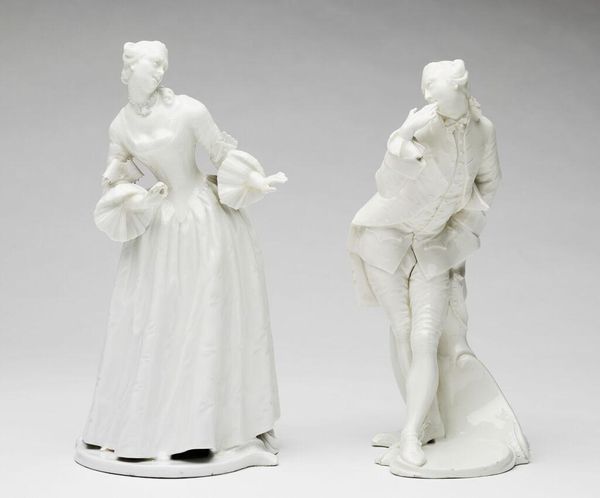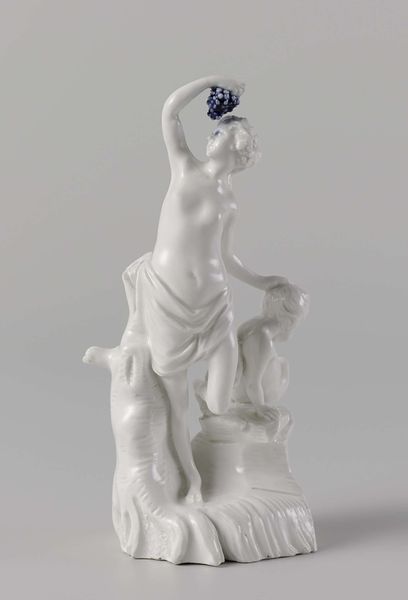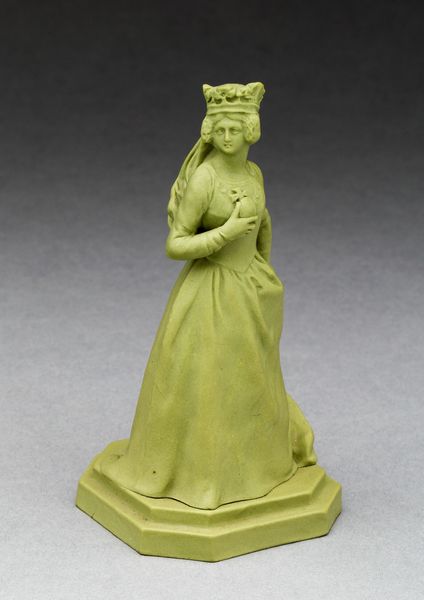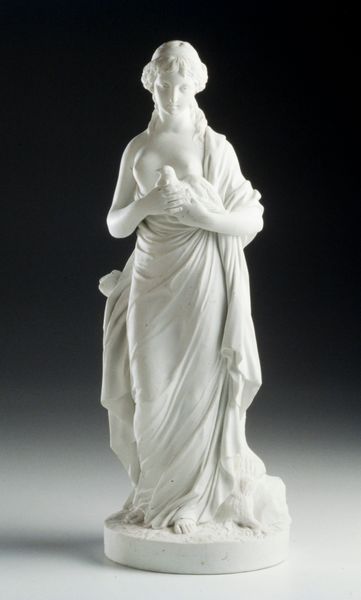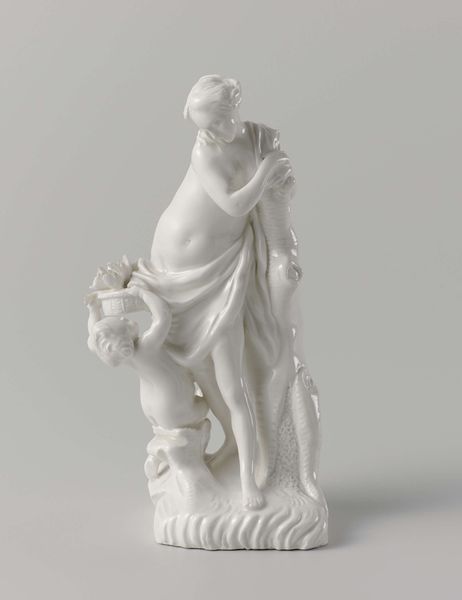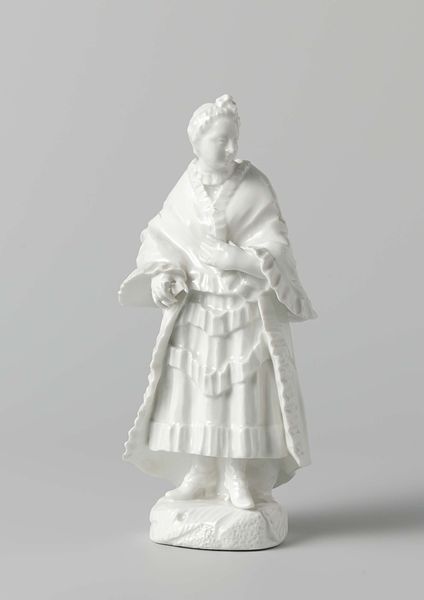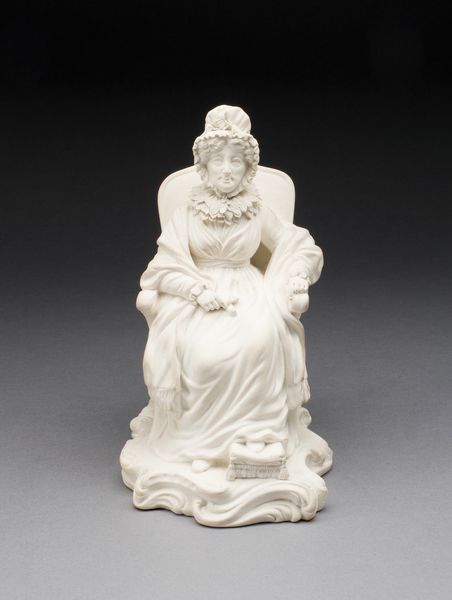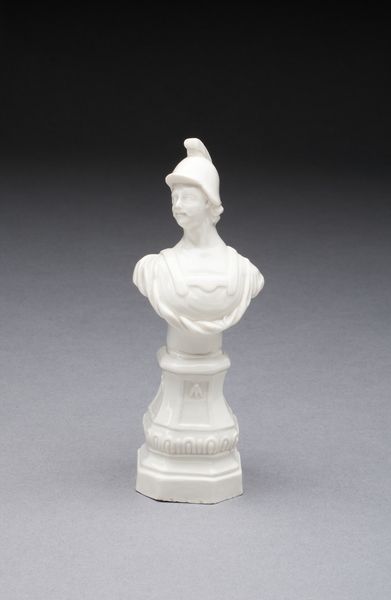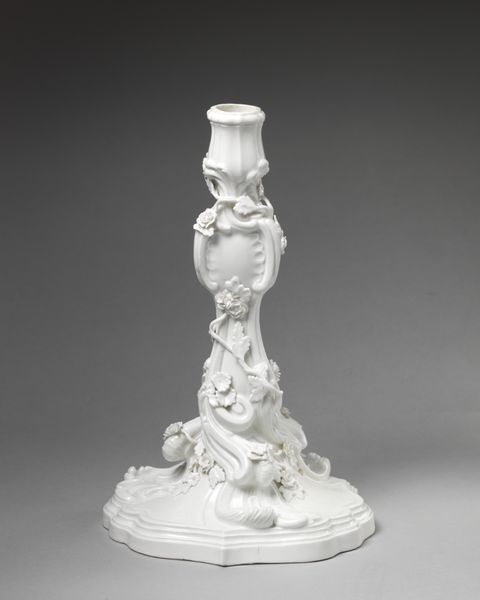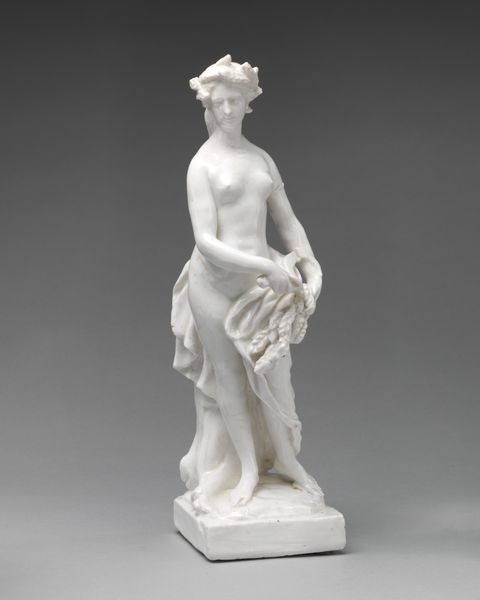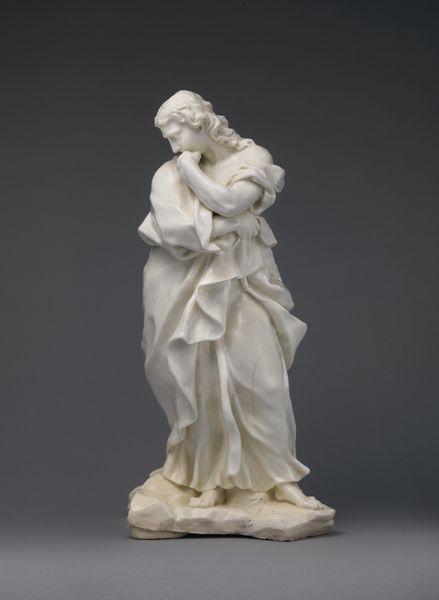
Dimensions: H. 13.3 cm (5 1/4 in.)
Copyright: Public Domain
Curator: Here we have a porcelain figure entitled "Singer," crafted by Franz Anton Bustelli, likely between 1775 and 1785. Editor: My initial impression is one of delicate theatricality. The pure white porcelain gives it an ethereal quality, almost like a captured moment from a dream. There's a subtle energy in the way she holds herself. Curator: It's fascinating how Bustelli captured the Rococo spirit in three dimensions. Looking closely, one might consider the complex social roles that singing and performance occupied, especially for women in that era. Was it empowerment, or simply another carefully constructed role to be played for male patronage? Editor: I see that mirrored in the costume, its rigid formality contrasting with the slight tension in her pose. Notice the positioning of her hand, as if subtly inviting a reaction. Porcelain, as a medium, brings its own cultural baggage too, evoking luxury, trade, and aristocratic privilege. Curator: Absolutely. And within the cultural context of Rococo art, this "Singer" is participating in a long history of performative identity. Considering art as gendered labor invites critical questioning of who is celebrated. Her posture evokes classic tropes and gendered representation. Editor: Indeed. Beyond her fashionable attire, are we seeing universal symbols of vulnerability or projection? Maybe even, on some level, artifice. This figure exists not simply to look upon but almost seems designed for intimate possession, placed within a domestic setting for contemplation, as a memento. Curator: Thinking through its display setting leads to pondering power structures and who had access to fine arts. Considering class, race, and gender exposes societal patterns reflected within this sculpture's popularity and display contexts during the late 18th century. Editor: I suppose that’s what stays with me, then—how an apparently simple porcelain figure can trigger such powerful undercurrents of cultural narrative and identity. Its seeming perfection is precisely where it reveals cracks of complexity. Curator: For me, this work serves as a visual entry point to dissect the societal complexities governing the period. And, most importantly, the continued presence of the patriarchy on female self-expression and art production, then, as much as today.
Comments
No comments
Be the first to comment and join the conversation on the ultimate creative platform.
